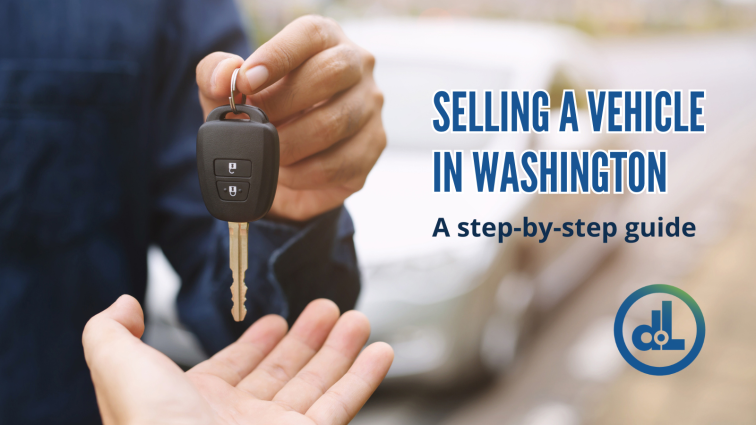 If you’ve never sold a car in Washington, the process might seem confusing or overwhelming. What steps need to be taken? How do you document the sale? Can you report it online or do you have to go in person? Do you keep the license plates? These and other questions are common.
If you’ve never sold a car in Washington, the process might seem confusing or overwhelming. What steps need to be taken? How do you document the sale? Can you report it online or do you have to go in person? Do you keep the license plates? These and other questions are common.
When you’ve decided to sell a vehicle, it’s a good idea to head on over to the Department of Licensing’s website to make sure you’re on the right path for your specific situation. In this article, we describe the basic selling process.
We suggest following these steps to sell your car:
1. Remove your personal items
Cleaning the exterior of your car is a good idea, of course, but it’s an even better idea to do a thorough sweep of the interior. This means more than vacuuming and trashing those old snack wrappers, napkins, and receipts. Remove anything that might bear your name, address, photo, or other personal information. This could include your registration or proof of insurance, for example.
While cleaning your vehicle inside and out might seem like an obvious step — after all, a tidy car is more appealing to a buyer — it helps protect your privacy after the sale.
2. Do a vehicle inspection
A serious buyer may ask to have the car inspected by a mechanic of their choosing. Agreeing to such a request, typically at the buyer’s expense, may build trust in the sales relationship. Just as importantly, it helps ensure that the vehicle is safe to operate.
Regardless of the findings of an inspection, it’s wise for both buyer and seller to keep a copy for their records.
3. Remove your license plates
Washington state law requires that newly purchased vehicles get new license plates affixed to the front and back. As the seller, you are legally obligated to remove your plates before the buyer drives off. Failing to do so could burden you with fees and liabilities. You may transfer the plates to a different (like-kind) vehicle you own, if you prefer, or you can surrender them at a vehicle licensing office. In any case, the buyer can’t use them.
Why does it matter? Imagine the vehicle you sold — with your plates still on it — racking up parking tickets, speed camera tickets, or rolling through toll checkpoints. This leaves you on the hook for possible infractions you had nothing to do with.
4. Complete a Bill of Sale
Before the buyer can apply for a new title and pay fees or taxes on the vehicle, you’ll both need to sign a Bill of Sale. This is not to be confused with a Report of Sale (we’ll get to that shortly). The Bill of Sale includes information about the vehicle, as well as the buyer and seller. As with most everything else, each party should keep a copy.
5. Make sure you have the vehicle title
A vehicle must have a valid title before it can be sold. If you can’t find your title, obtain a replacement title. This can take four to eight weeks. If you need it sooner, a quick title may be an option — but it does cost more. You may want to contact a vehicle licensing office to go over your options.
6. Collect payment and sign over the title
You might want to collect payment from the buyer before signing over the title. We suggest doing both in one trip to a vehicle licensing office. If a licensing office isn’t an option and you’re concerned about your safety, such as during an all-cash transaction, you may want to meet in a well-lit public area or ask a trusted third party to be there.
7. Submit a Report of Sale
Filing a Report of Sale informs the Department of Licensing that the vehicle has left your possession. It may release you, as the seller, from liability related to the vehicle. Like the Bill of Sale, a Report of Sale documents details such as vehicle and buyer/seller info, as well as odometer readings (model year 2011 or later only).
The seller needs to submit a Report of Sale within five days of the sale date. Like many other things, this can be done online at dol.wa.gov. Again, make sure each party gets a copy.
Gifting or donating the vehicle? You’ll still need to submit a Report of Sale.
8. Cancel insurance and services related to the vehicle
No one wants to pay for something they’re not using. Remember to cancel your insurance policy on the vehicle and end any subscription-based services associated with it!
